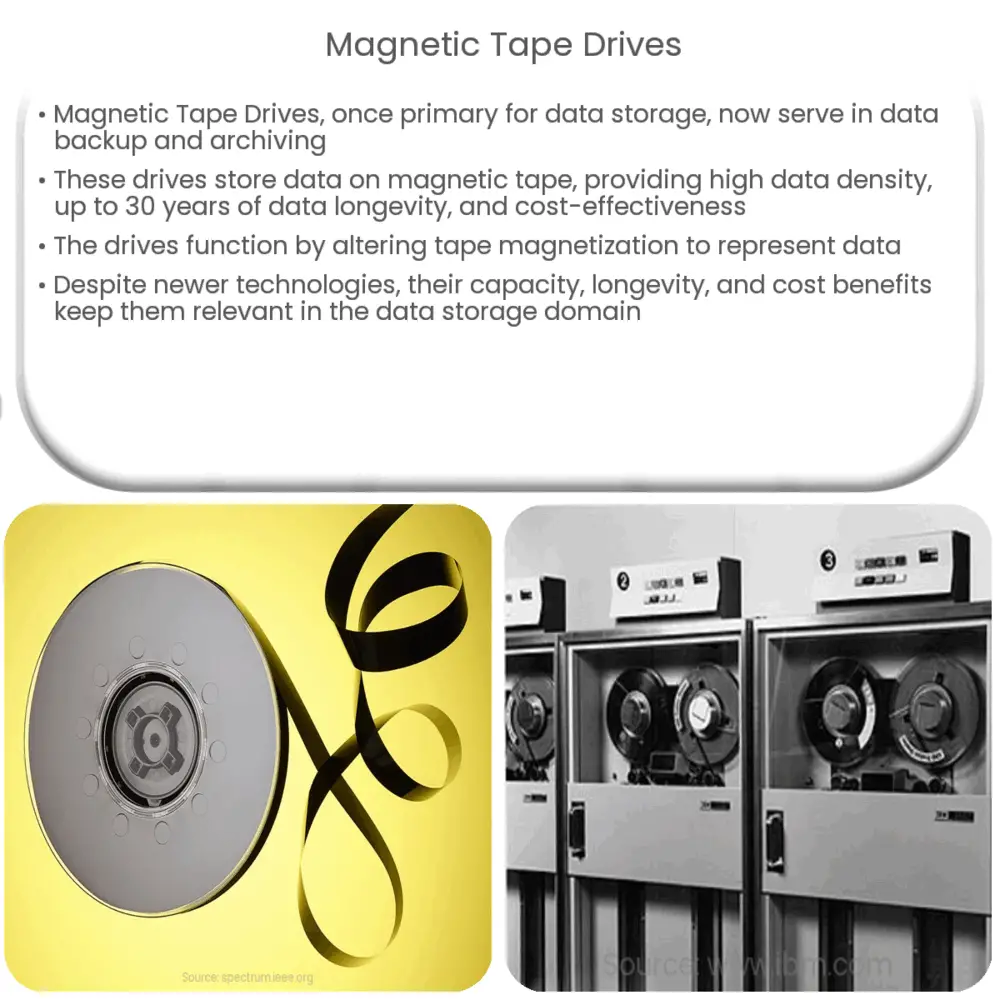Explore the relevance and operation of magnetic tape drives in data storage. Understand their usage, evolution, and future in our digital world.

Introduction to Magnetic Tape Drives
Once a primary method for data storage, Magnetic Tape Drives may seem like a relic from the past. However, they continue to play a crucial role in the realm of data backup and archiving. Though largely replaced by faster, more accessible media for regular use, these drives have distinctive advantages that keep them relevant in certain areas of data storage.
Understanding Magnetic Tape Drives
Magnetic tape drives store data on a strip of magnetic tape, which is a medium that uses thin plastic tape coated with magnetic material. The magnetic tape is wound around reels, and data is written or read as the reels rotate the tape past the read/write head of the drive. This is an inherently sequential access method, differing from the direct access methods offered by hard disk drives or solid-state drives.
- Data Density: Magnetic tape drives are capable of storing massive amounts of data, a feature termed as high data density. This high capacity is one of the reasons why they are still used for backup and archiving purposes.
- Longevity: The data stored on magnetic tapes can last up to 30 years under optimal conditions, making them an excellent choice for long-term data preservation.
- Cost-Effective: When it comes to the cost per gigabyte of storage, magnetic tapes are significantly cheaper than hard disks and solid-state drives. This cost-effectiveness is amplified when dealing with very large data volumes.
The Operation of Magnetic Tape Drives
Magnetic tape drives operate by altering the magnetization of the magnetic layer on the tape in patterns that represent data. The data is recorded in tracks that run along the length of the tape. The tracks are recorded in a serpentine pattern, with the drive switching direction at the end of each track. This results in a ‘serpentine’ write pattern which utilizes the tape’s entire length, optimizing storage capacity.
Despite the apparent sequential nature of the drive, it can still locate data reasonably quickly due to a feature called filemark. Filemarks are metadata that the drive writes to the tape along with the data, acting as a sort of index. They allow the drive to move directly to a specific block of data, significantly improving access times.
Use Cases and Evolution
Magnetic tape drives were extensively used in the early days of computing for both primary storage and backup. Over time, as technologies such as hard disk drives and solid-state drives became more popular for primary storage, the role of magnetic tape drives shifted more towards backup and archiving.
- Backup: Given the large storage capacity, magnetic tapes are excellent for backing up large volumes of data. Backup systems often employ a rotation scheme using several tapes, creating multiple copies of data for redundancy.
- Archiving: The longevity and cost-effectiveness of magnetic tapes make them a prime choice for archiving. Institutions that need to keep records for a long period find magnetic tapes particularly useful.
Over the years, the technology of magnetic tape drives has continued to evolve, with advances in the material of the tape and the techniques for writing data. This has led to an increase in the data density and the reliability of magnetic tape drives.
Drawbacks and Limitations
While magnetic tape drives offer certain advantages, they also come with limitations. Accessing data on a tape is inherently sequential and thus slower than direct access methods. Additionally, the physical nature of the tape means it can be damaged by mishandling or adverse environmental conditions, potentially leading to data loss.
Magnetic tapes also require special handling and storage to maximize their lifespan. They need to be stored in a cool, dry environment and must be rewound periodically to prevent the tape from sticking together.
Conclusion
In conclusion, despite the advent of newer, faster technologies, magnetic tape drives still hold a unique position in the world of data storage. They continue to be used for backup and archiving due to their high capacity, longevity, and cost-effectiveness. While they have their limitations, the ongoing advancements in technology are continually improving their data density and reliability. So, while they may seem like an artifact from the history of computing, magnetic tape drives are likely to remain a part of our data storage landscape for many years to come.

